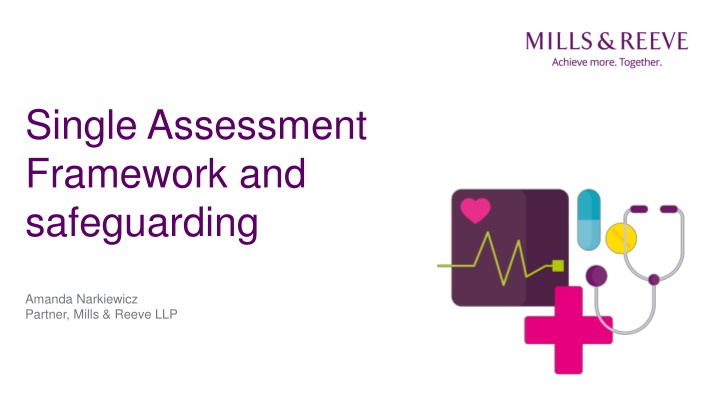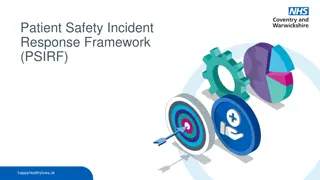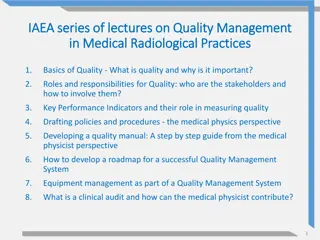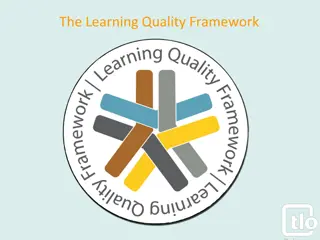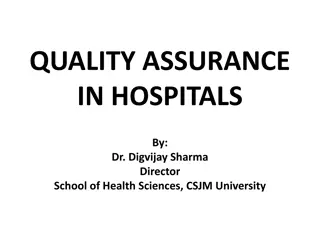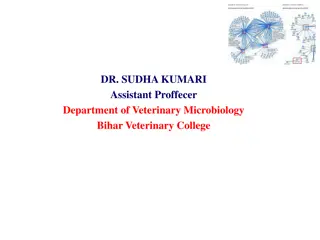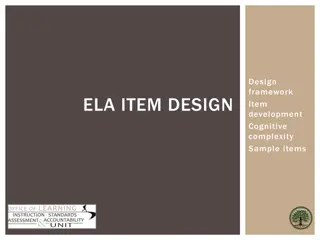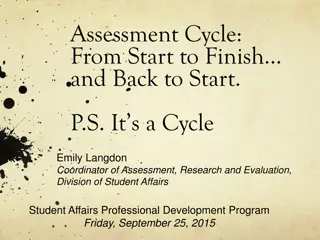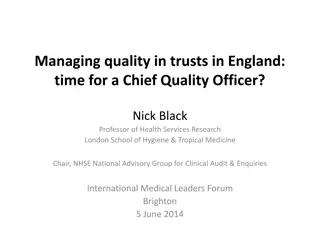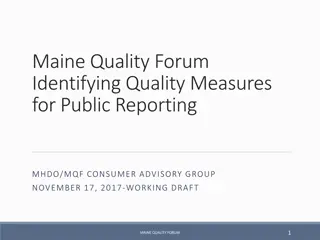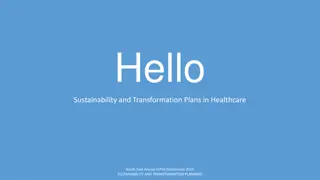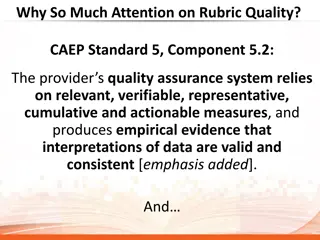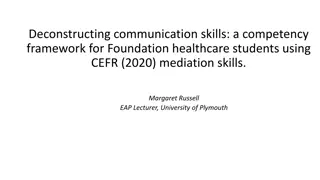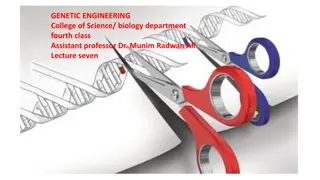Transformation of Quality Assessment Framework in Healthcare
The healthcare quality assessment framework is evolving with a new strategy focused on data-led, people's experiences, care integration, and safety culture. The current framework is transitioning towards a new approach by late 2023, incorporating separate registration and monitoring processes, five key questions, quality statements, and evidence gathering methods in alignment with best practices and national guidelines. Ratings are calculated based on performance against quality statements and evidence, administered through a provider portal. Evidence falls into six categories and is gathered both on-site and off-site to ensure quality assessment. Transparency and availability of evidence are highlighted concerns in the process. Ratings calculation involves reviewing evidence types within required categories for each quality statement and combining them to produce key question and overall service ratings.
Download Presentation

Please find below an Image/Link to download the presentation.
The content on the website is provided AS IS for your information and personal use only. It may not be sold, licensed, or shared on other websites without obtaining consent from the author.If you encounter any issues during the download, it is possible that the publisher has removed the file from their server.
You are allowed to download the files provided on this website for personal or commercial use, subject to the condition that they are used lawfully. All files are the property of their respective owners.
The content on the website is provided AS IS for your information and personal use only. It may not be sold, licensed, or shared on other websites without obtaining consent from the author.
E N D
Presentation Transcript
Single Assessment Framework and safeguarding Amanda Narkiewicz Partner, Mills & Reeve LLP
CQCs new strategy Data Led - People s experiences - Care integration -Culture of safety through learning Dynamic Regulation A single assessment framework
Current Framework New Framework from late 2023 Separate registration / monitoring processes Incorporates registration Five key questions, each key question assessed and rated using KLOEs, prompts and ratings characteristics. Ratings and five key questions remain. Each key question is aligned with I statements (what people expect / need). 34 new quality statements ( we statements ), which replace the KLOEs, prompts and ratings characteristics. Evidence of KLOEs - gathered at physical inspections at set intervals based on past ratings. Quality statements are assessed using evidence, which falls into one of six categories. Not all categories apply to all quality statements. Evidence is gathered using a variety of methods and updated on a rolling basis over a two year period or in response to concerns. Ratings based on professional judgement of performance against KLOEs, prompts and characteristics; apply until next inspection, regardless of changes during the interval. Ratings are calculated using a scoring system, calculated based on performance against each quality statement, based on relevant evidence and can change at any time. Administered through a provider portal. Underpinned by best practice guidelines and national guidance.
Evidence Evidence falls into one of six categories: i. ii. iii. Feedback from partners iv. Observation v. Processes vi. Outcomes People s experience Feedback from staff and leaders Not every evidence category applies to every quality statement.
Evidence gathering cont. Evidence gathered on site and off site Off site: Data on outcomes of care (national clinical audits; patient reported outcome measures; infection control rates) Anonymised patient data Interviews with staff, partners and feedback from service users Complaints data Statutory notifications and other data held by CQC On site: Observing care Talking to people about their experiences Understanding culture and staff interactions Site visits more frequent where: Greater risk of poor care or a closed culture Only way of ensuring quality is properly assessed Concerns about transparency/availability of evidence
How are ratings calculated? The stages applied to produce a key question rating and overall rating for a service: 1. Review evidence types within the required evidence categories for each quality statement. 3. Combine these required evidence category scores to give a score for the related quality statement. 2. Apply a score to each of these evidence categories. . 6. Aggregate the key question ratings to give an overall rating 4. Combine the quality statement scores to give a total score for the relevant key question. 5. This score generates a rating for each key question.
How are ratings calculated? 25 38% = Inadequate 39 62% = Requires Improvement 63 87% = Good >87% = Outstanding
Safeguarding some context The Safeguarding Adults 2019 Annual Report reported that care homes (with / without nursing) accounted for 34% of all safeguarding enquiries conducted under s.42 Care homes often struggle to understand: - The difference between safeguarding issues and poor practice - When and how to make referrals to the local authority CQC prosecutions increasing Safe Care and Treatment (Regulation 12)
Safeguarding Quality Statement If you can meet the following quality statement you are providing a good level of care: We work with people to understand what being safe means to them as well as with our partners on the best way to achieve this. We concentrate on improving people s lives while protecting their right to live in safety, free from bullying, harassment, abuse, discrimination, avoidable harm and neglect. We make sure we share concerns quickly and appropriately. Related regulations: Health and Social Care Act 2008 (Regulated Activities) Regulations 2014 Regulation 13: Safeguarding service users from abuse and improper treatment Regulation 11: Need for consent Regulation 12: Safe care and treatment (Regulation 9: Person-centred care) (Regulation 17: Good governance) (Regulation 20: Duty of candour)
Regulation 13 What do providers need to do to meet their duties under the regulation: Effective systems and processes to prevent abuse Effective systems and processes to immediately investigate allegations / evidence of abuse Protect service users from discrimination Avoid unnecessary control or restraint Meet the needs of service users Service users must not be deprived of their liberty without lawful authority Sets out a definition of abuse and control and restraint
Evidence gathering under the SAF? What might the CQC be looking at when assessing safeguarding? Local and national data Benchmarking, intelligence and whistleblowing Systems and processes do they exist, are they effective? Staff training Safeguarding referrals and notifications to the CQC At inspection can staff demonstrate their knowledge? Learning culture Peoples experiences of care do people feel safe What you pro-actively share with the CQC on the portal!
Pro-active preparation Up to date and robust policies and procedures Training When and how to make a safeguarding referral to the LA Build staff confidence embed training Avoid under / over reporting Mental Capacity Act Deprivation of Liberty Safeguards Relationships local network Demonstrate a learning culture Toolbox talk equivalent - avoid fear of failure and promote learning Routinely share good practice internally Document, document, document capture good practice
Looking ahead Optimism for the future why? How CQC have arrived at rating is more transparent Scoring system how close are you to the next category? Dynamic inspection More transparency for the public short reports Why not? Dynamic inspection rating can change any time low good or high good Compliance with the we statements and assessment of the evidence is still largely a subjective assessment Scoring process simple? Turning an oil tanker - how dynamic will it be?
Thank you If you have any questions or would like to speak to one of our team, we d love to hear from you. Call or email: Amanda Narkiewicz T: +44(0) E: amanda.narkiewicz@mills-reeve.com 7501 727 462 www.mills-reeve.com
